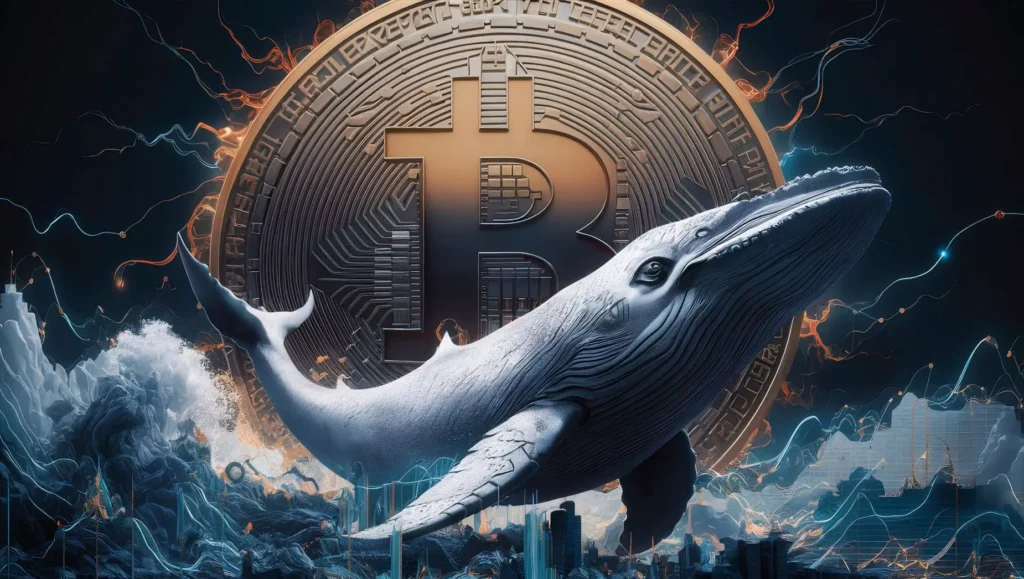One group consistently causes waves in the often-changing seas of cryptocurrencies: short-term Bitcoin whales. Renowned for having substantial Bitcoin holdings for short intervals, these large-scale investors have lately shown a comeback in profitability. Fresh on-chain data show, as of early May 2025, that these market actors are not just surviving the market’s instability—they are flourishing, reaping profits amid transient pricing fluctuations.
Bitcoin Bounces Back Above $63K
Following a fall that had investors on edge, Bitcoin has made a notable recovery after a turbulent start to the year and crossed back above the $63,000 barrier. Renewed interest from institutional players, the continuing impact of Bitcoin ETFs introduced earlier this year, and expectations surrounding the recent Bitcoin halving event have primarily driven this comeback. However, market observers have notably focused on the actions of short-term holders, particularly whales.
Short-term holders, that is, addresses holding Bitcoin for fewer than 155 days, have seen their profitability spike based on Glassnode and CryptoQuant statistics. Whales who purchased the dip during the March and April corrective phases account for a substantial portion of these earnings, now reaping the benefits. Many of these whales made calculated purchases when Bitcoin fell into the $58,000–$60,000 region, and with the price now rising, their profits are building rapidly.
Whales Show Confidence Amid Profitable Moves
Another indication of whale confidence is the growing activity in significant transactions. Transactions worth over $1 million have been identified by blockchain analytics companies, with the majority of these transfers occurring between wallets and exchanges, indicating both profit-taking and purposeful reallocation. Although some profit-taking is occurring, most of these whales are holding tight, implying that they anticipate further upward movement in the coming weeks.

For short-term holders, in reality, on-chain measures including the Spent Output Profit Ratio (SOPR) are flashing positive signals. SOPR values above 1 indicate that, on average, coins traded on-chain are being sold at a profit. The short-term SOPR is currently significantly above this level, which highlights the predominance of green recent whale sales.
Whale Moves Boost Bitcoin Sentiment
The movements of Bitcoin whales often have a knock-on effect on the entire market, thereby influencing the attitudes of retail investors. Retail traders are starting to regain confidence as whales continue to post gains and maintain their holdings, thereby progressively increasing buying demand. Macroeconomic trends, notably the U.S. Federal Reserve’s recent warning of interest rate increases and the continuous devaluation of the dollar, both of which have historically favored Bitcoin’s price, help to further this increasing momentum.
With many seeing recent actions as a sign that the bottom may be in, social media channels and crypto forums have become ablaze with discussion about whale activities. Although short-term whales are currently rewarding, researchers warn that the crypto market remains erratic. Especially if macroeconomic conditions change or profit-taking increases, a severe correction is always a possibility.
Bitcoin’s Future: Whales Drive the Market
The future of Bitcoin seems somewhat cautiously optimistic as of May 2025. Though the short-term whales are obviously swimming in riches, it remains to be seen whether this pace can be maintained. Primarily hinges on whether Bitcoin can convincingly surpass its next significant barrier level, which is close to $65,000. Should it occur, the even more active accumulation by big players might drive prices higher and provide conditions for a robust Q2.
For now, the waters are still good for short-term whales who have played their cards sensibly and precisely timed the market. Their actions serve as a reminder that in the realm of cryptocurrencies, fortune usually favors the daring but also the strategic. While they swim in riches, the rest of the market keeps a careful eye, wondering whether to follow or brace for the next wave.
